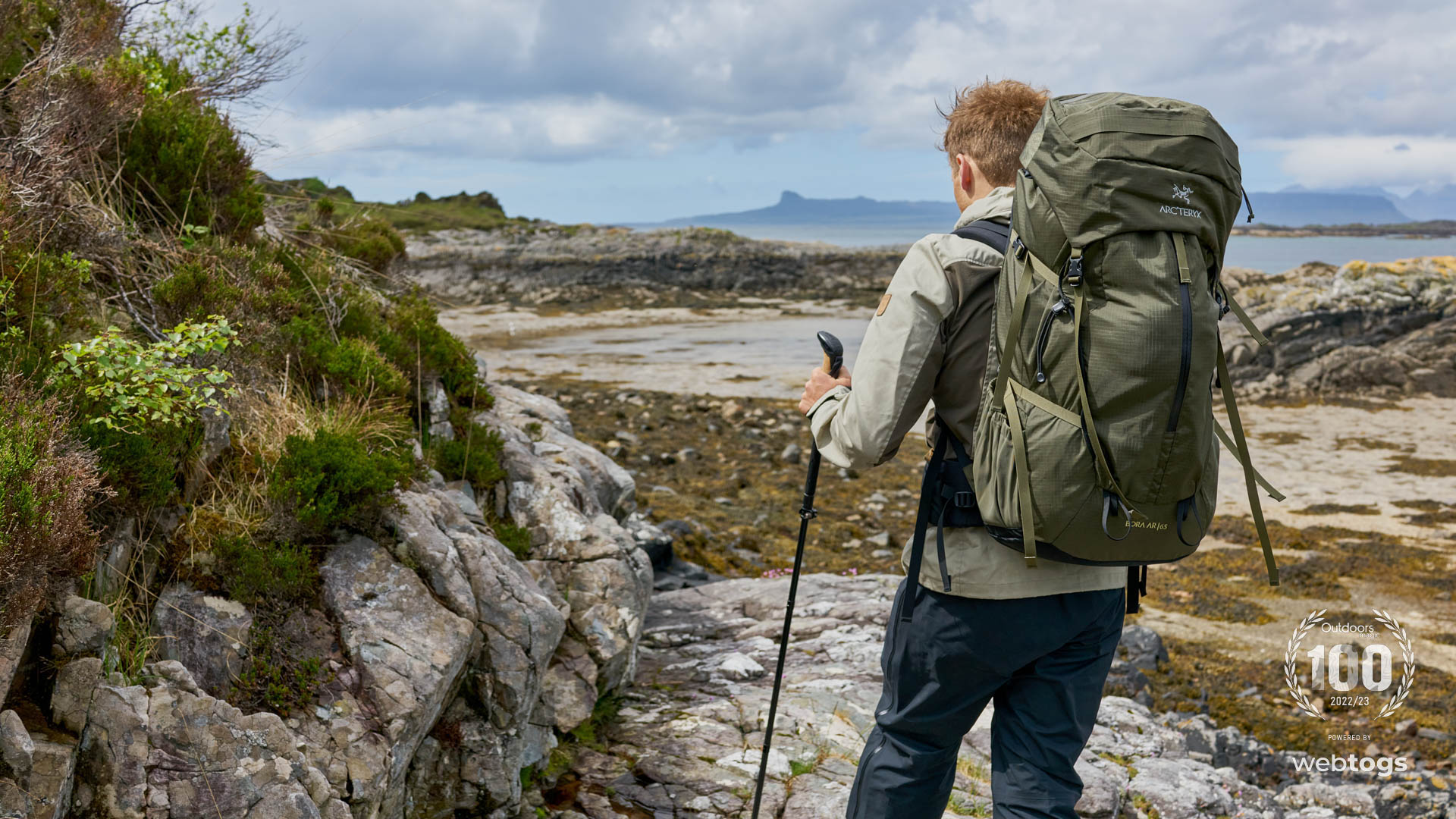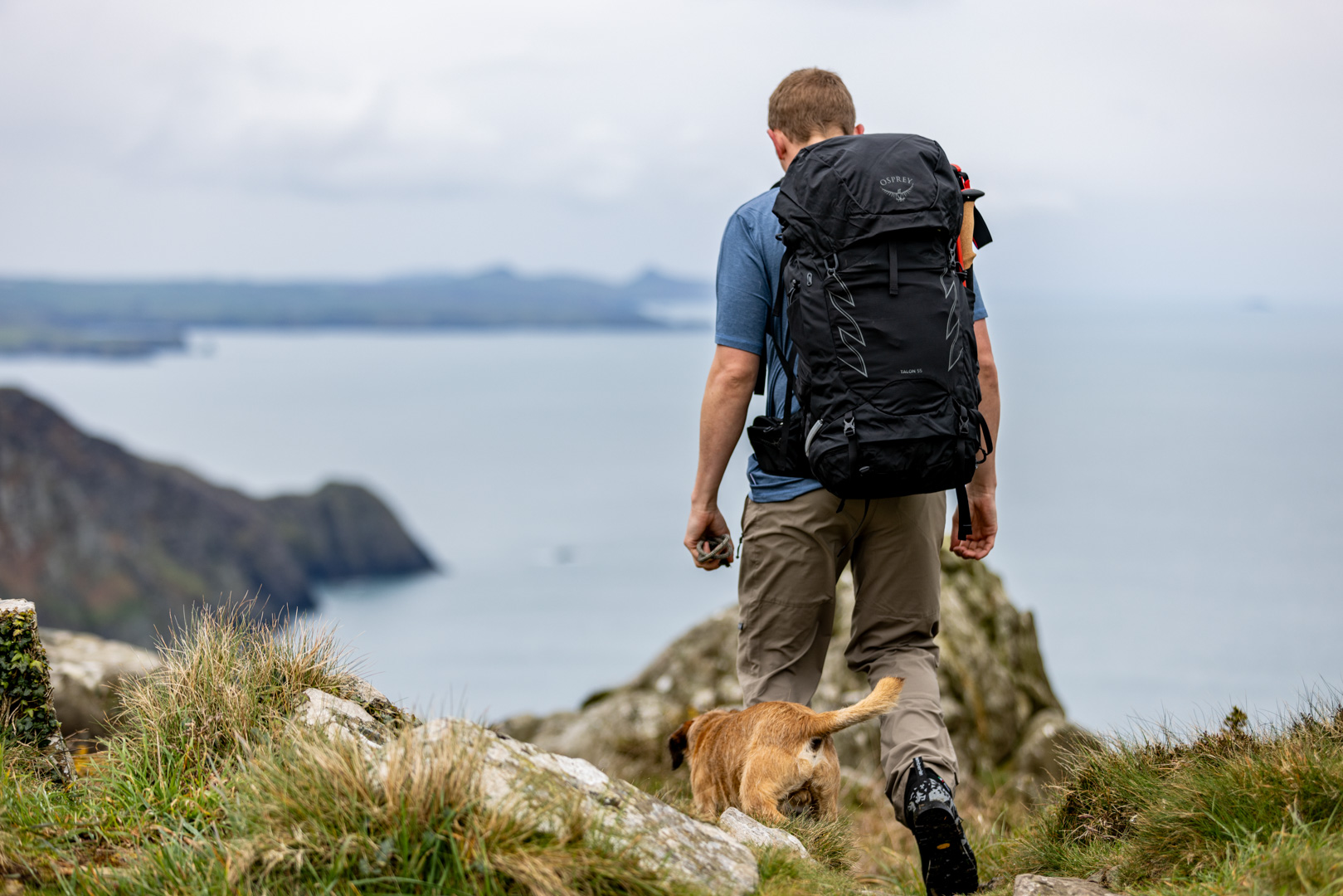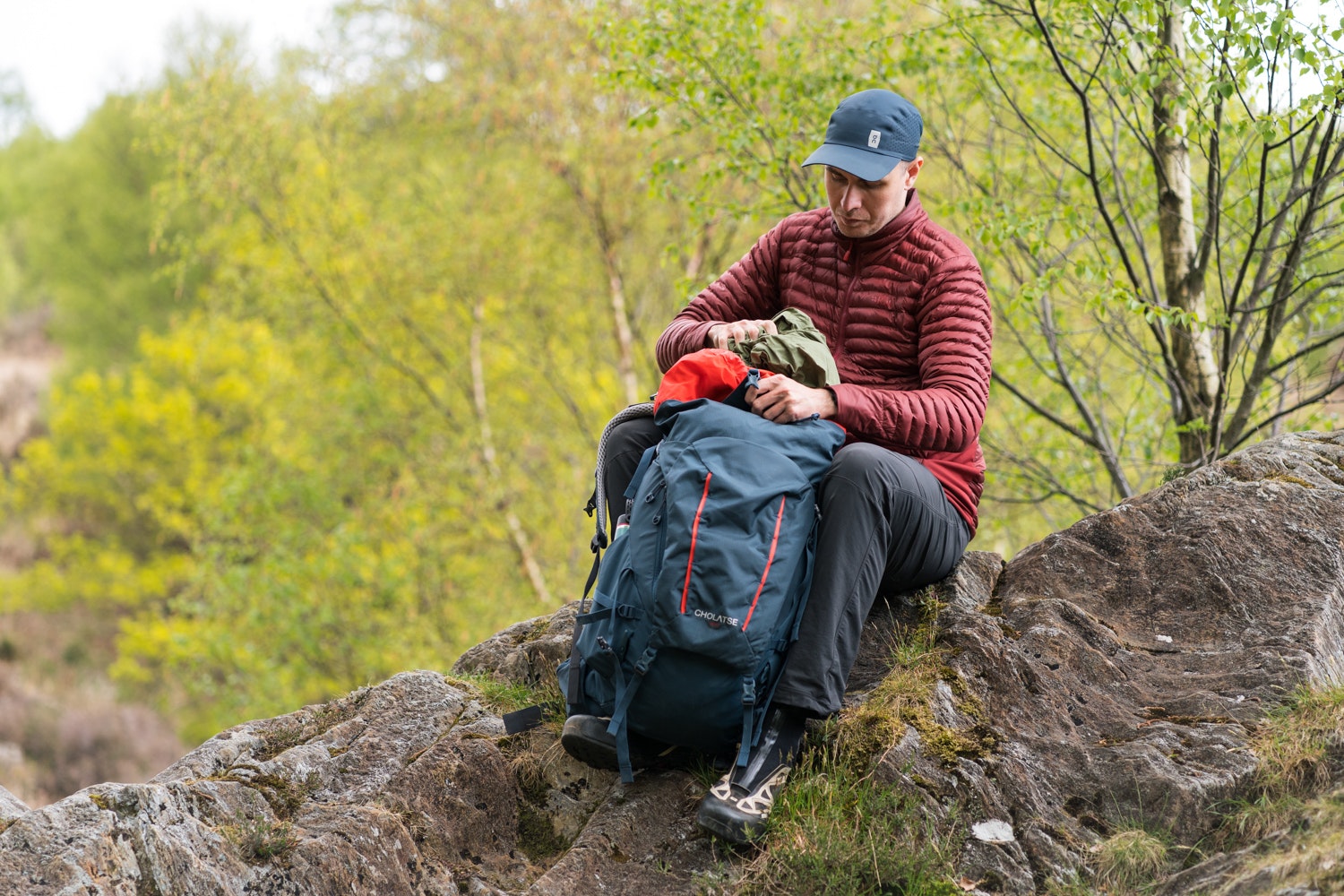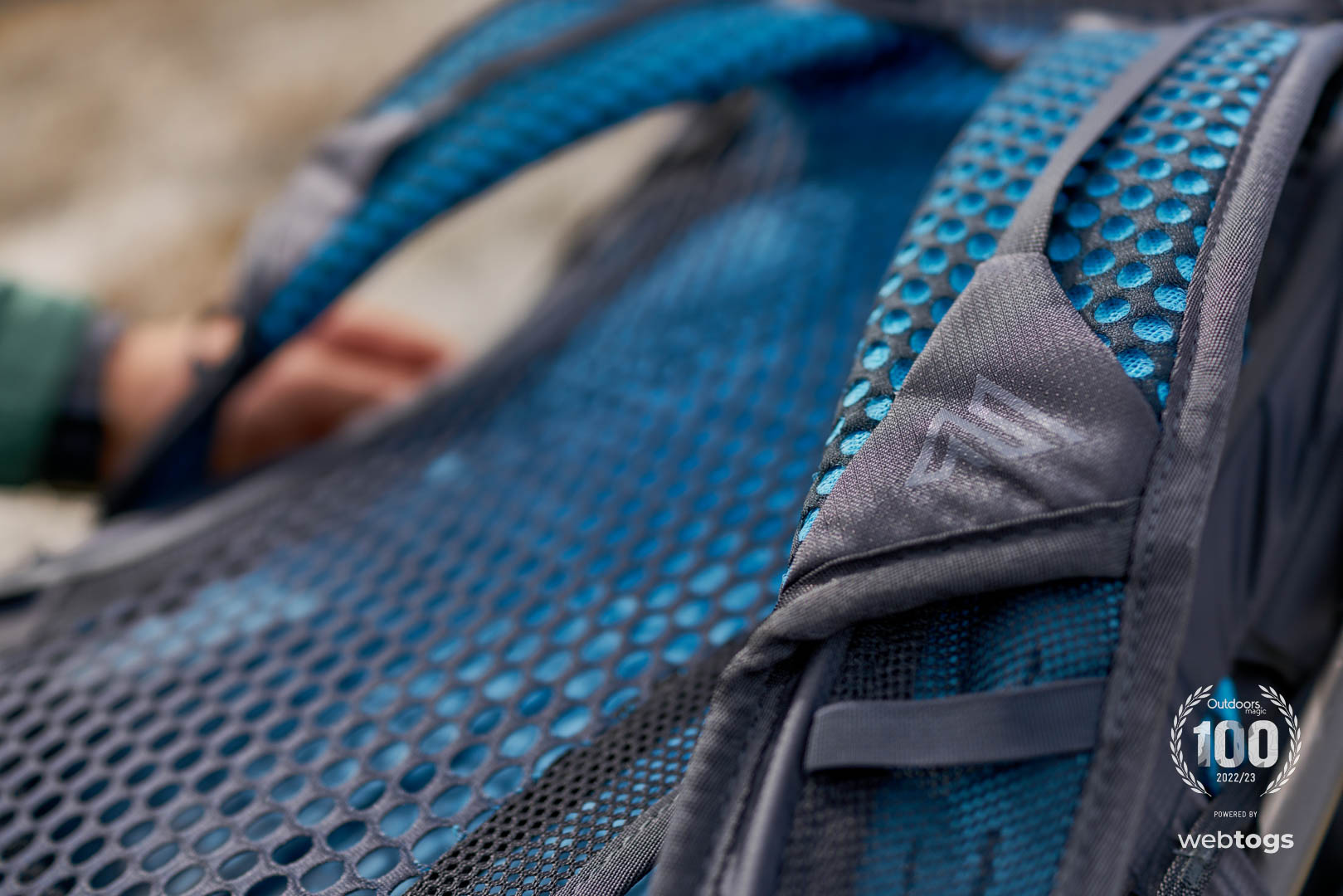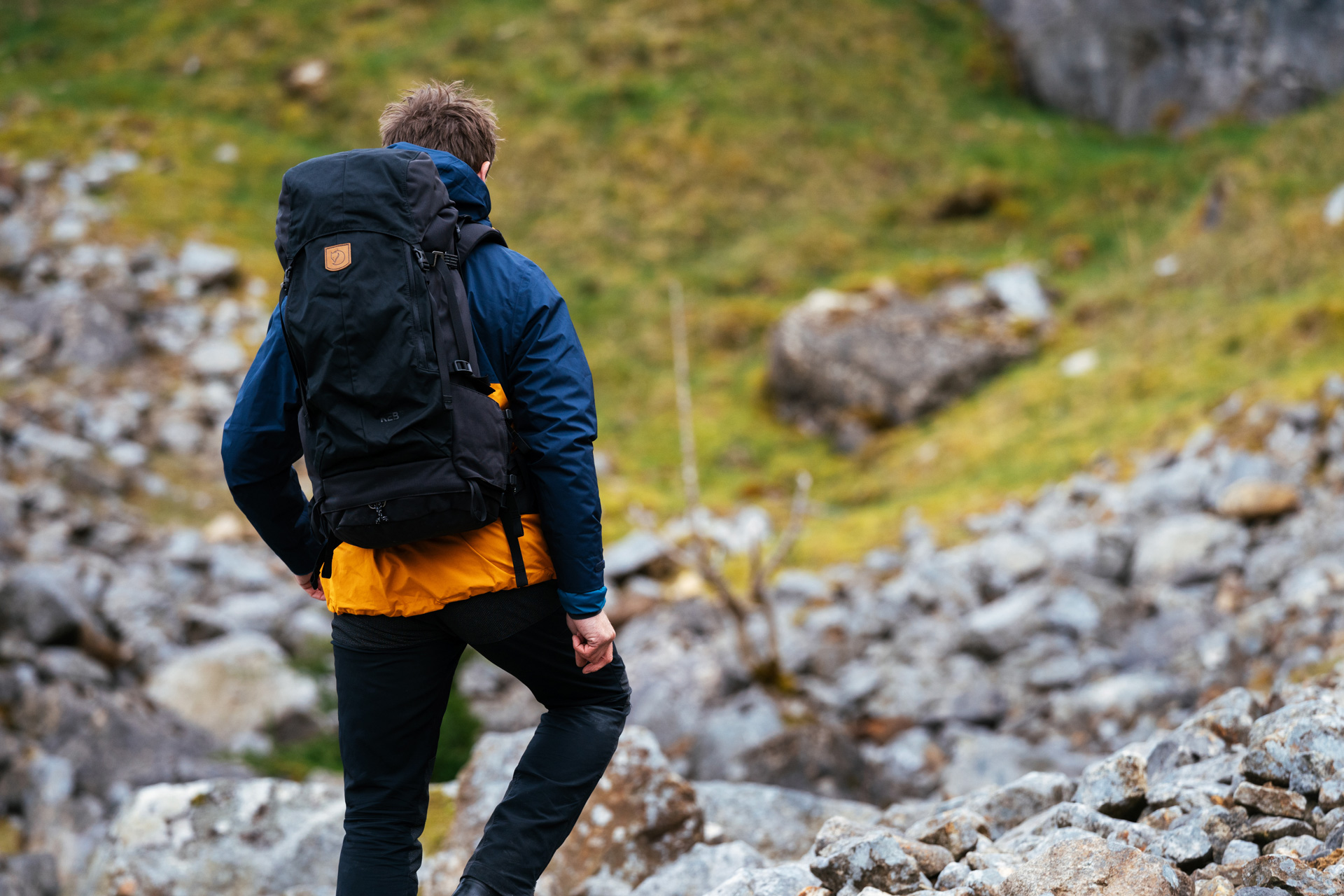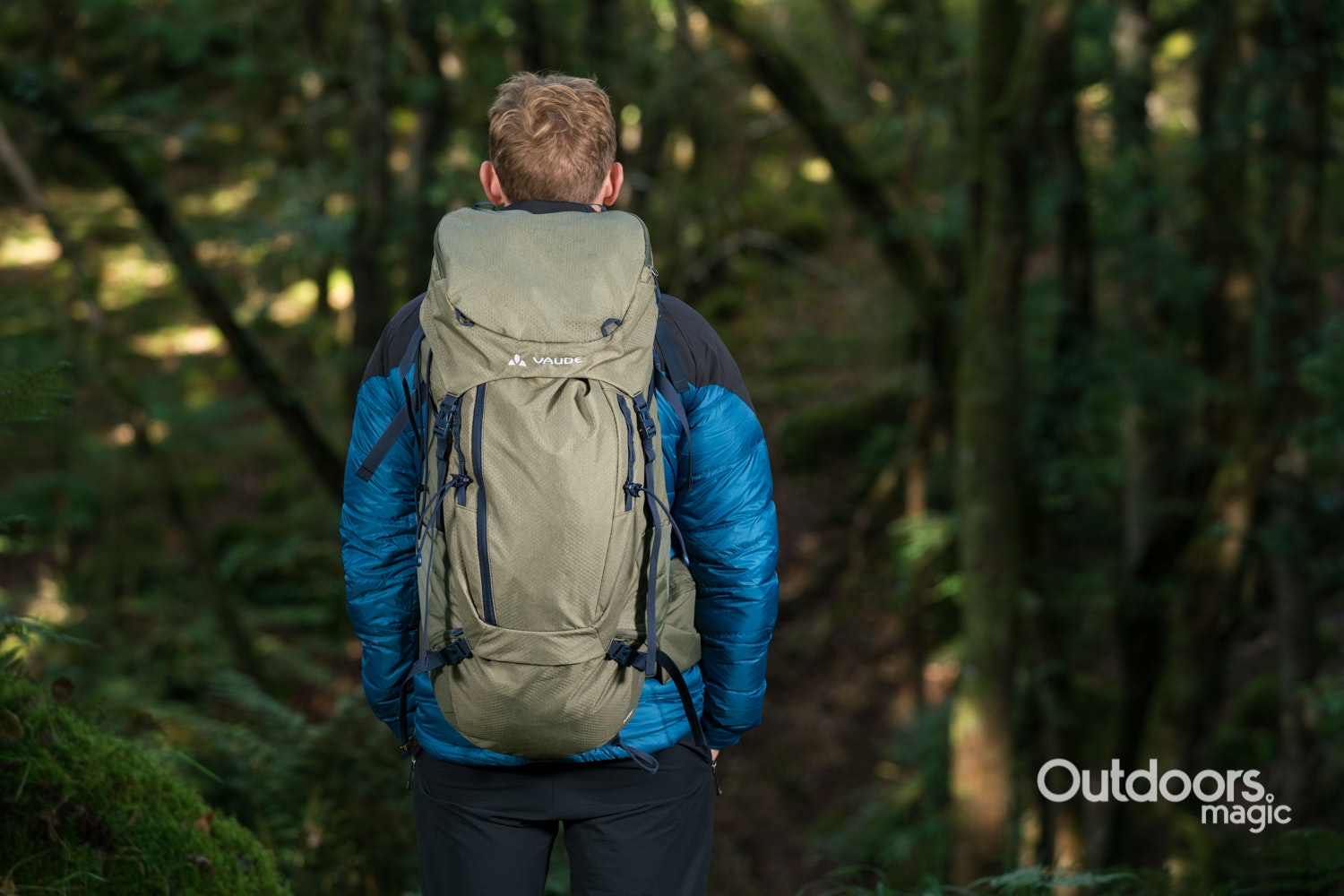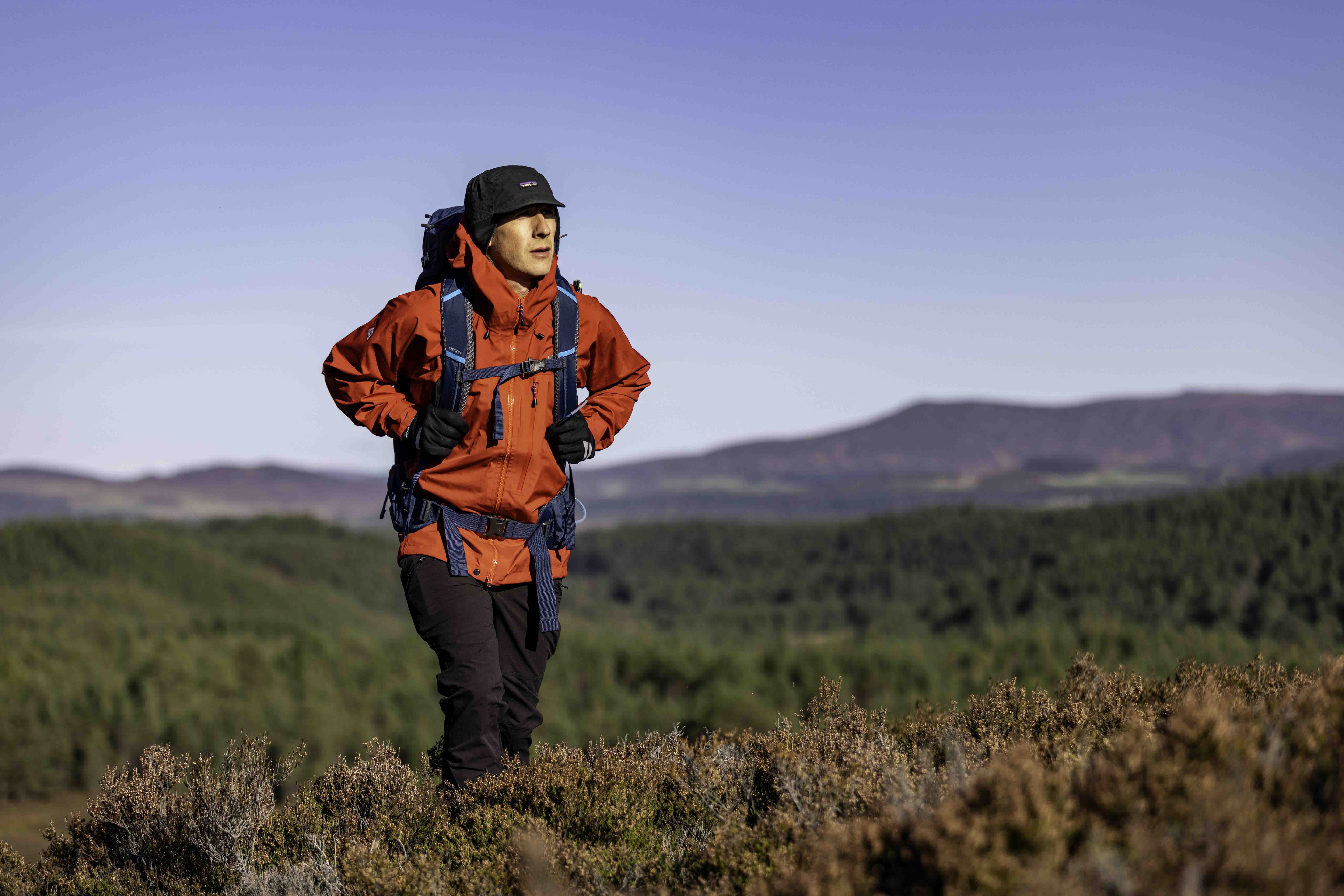Backpacking packs for hiking will come in a variety of sizes and the size that’s best for you depends on the trips you intend on undertaking. If you’re trekking between huts or hostels, especially in warmer weather, a 35-litre backpack should be adequate. The 35L packs reviewed below were perfect for a hostel-to-hostel walk in the Brecon Beacons for example. Ultralight backpackers – the types of people who chop off half their toothbrush – will also stick to around 35L for longer trips with a tarp or tent outer.
For those who like backpacking with a bit more comfort at night, or in colder months when you need a heftier sleeping bag and sleeping mat, something between 38 and 55 litres should be right. Anywhere beyond that and frankly, you’ve got too much stuff for an enjoyable multi-day trekking trip. Backpacks over 55L should suit anyone heading into areas of wilderness for long periods of time, when there’s little chance of resupplying and you have to carry everything you need in with you.
Once you’ve decided on the size, the next consideration, and the one that you should prioritise above all else, is the carry comfort. The backpack is going to essentially be your home for a few days; it’s going to get heavy, it’s going to get annoying. It must be comfortable. And the only way to test that is to try it on.
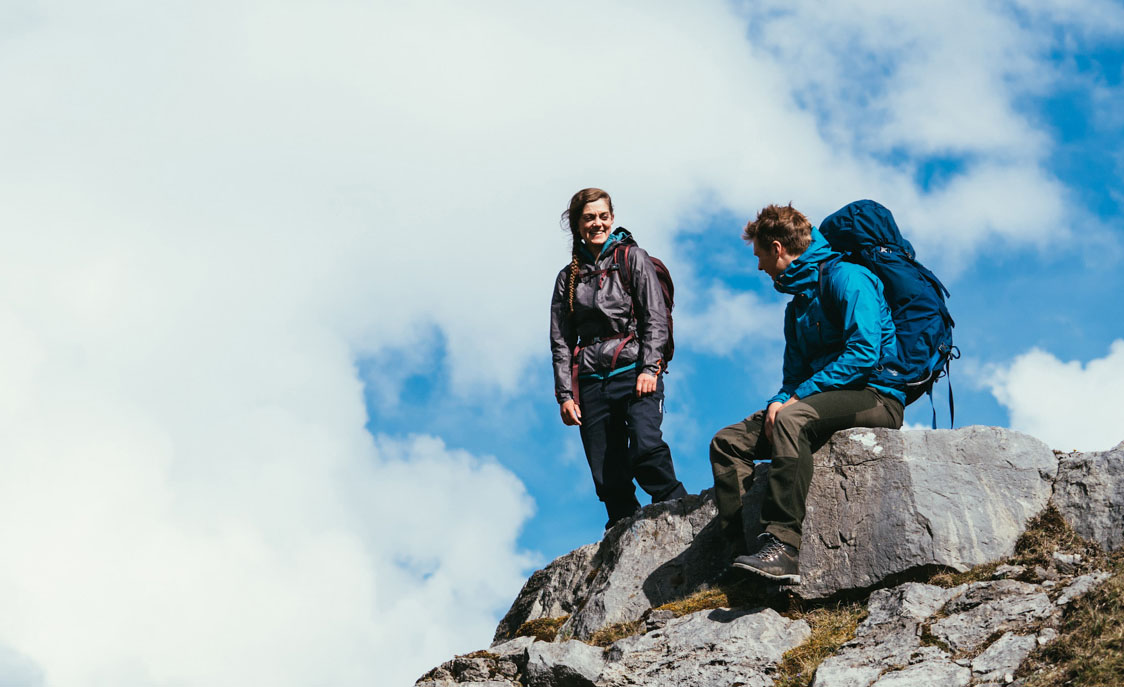
If you’re looking for other gear for trekking, we’ve got you covered. We’ve compiled similar comparative reviews for all kinds of kit, including round-ups of the best two person tents and the best one person tents for those who prefer to go solo. We’ve also covered the best sleeping bags and best backpacking sleeping mats, plus accessories as well, with detailed looks at the best trekking poles, best portable water filters and best backpacking stoves too.
Our Team’s Best Hiking Backpacks for 2024
Here’s the list of the best hiking and trekking backpacks we’ve come across following our extensive testing and reviewing throughout the mountains of the UK.
-
Best Overall Backpacking Backpack: Osprey Kestrel 38
- Best Value Hiking Backpack: Highlander Ben Nevis 52
-
Best Ultralight Backpack: Bach Molecule 45
-
Best Backpack for Big Loads: Arc’teryx Bora 65
-
Best Waterproof Backpack: Ortlieb Atrack 35
-
Best Multi-Use Backpack: Sierra Designs Flex Capacitor 40-60
The Expert
I’m an outdoor gear reviewer with over ten years of experience working for various outdoor magazines and judging gear for the likes of ISPO, the Scandinavian Outdoor Awards and the OIA Awards.
When I’m not writing about gear as part of my job, I’m testing it as part of my hobby which is multi-day backpacking. I’ve hiked a long list of trails over the years, including the whole 870-mile Wales Coast Path, the Camino de Santiago, Alta Via 2 and the Cambrian Way, which I am now a trustee of.
How The Backpacks Were Tested
I tested the majority of the backpacks that are featured here, along with all of the ones that didn’t make this list too. The ones I didn’t test, which were mainly the women’s models, were assessed by members of our gear team who you’ll see in the pictures within this article. I had the final say on which items were chosen for this round up, making my selections based on things like volume flexibility and adjustment, carrying comfort, load management, durability and features. I also considered overall value and factors relating to the sustainability of the product.
1. Osprey Kestrel 38
Our winner: the best backpack overall following our tests

Price: £160
Weight: 1760g
Best for: wild camping, hut to hut trekking, winter hillwalking
Key attributes: durable, comfortable, loads of useful details
35 to 40 litre packs like this one from Osprey hit a nice sweet spot, offering the right kind of capacity to cater for a range of different types of trips, from quick weekend wild camps through to big winter days out where you need plenty of layers and technical kit for safety.
It falls within Osprey’s broad Kestrel (men’s) and Kyte (women’s) range which is made up of a number of different packs at various capacities. It’s a hugely popular series for the brand and one that we’ve always been impressed with here at Outdoors Magic.
The Kestrel 38 is a very comfortable backpack to wear – probably one of the most ergonomic we’ve tried. There’s padding in all of the right places, support at the lumbar and plenty of air channels for ventilation too.
The main material feels extremely hard wearing. During our tests in Scotland, the pack went through a fair bit of abrasion but emerged looking good as new. It offered good water resistance but we found ourselves using the supplied rain cover when the rain really picked up, just for the peace of mind that our kit was properly protected.
As we’ve come to expect from Osprey, there are loads of useful details, including ice axe loops, a front shove-it pocket (we found this was perfect for a down jacket) and base access to a sleeping bag compartment. Credit to Osprey for using bluesign approved 100% recycled fabrics here too.
Full Specifications
Available in men’s (Kestrel) and women’s (Kyte) versions / various capacities within the range / back sizes: S/M and L/XL / rain cover at base / recycled nylon fabrics / internal hydration bladder sleeve / bottom access / trekking pole and ice axe loops.
Selected for the Outdoor 100 2023/24 – Here’s our full Osprey Kestrel 38 review.
Buy the Osprey Kestrel 38: £190 at Osprey.co.uk



